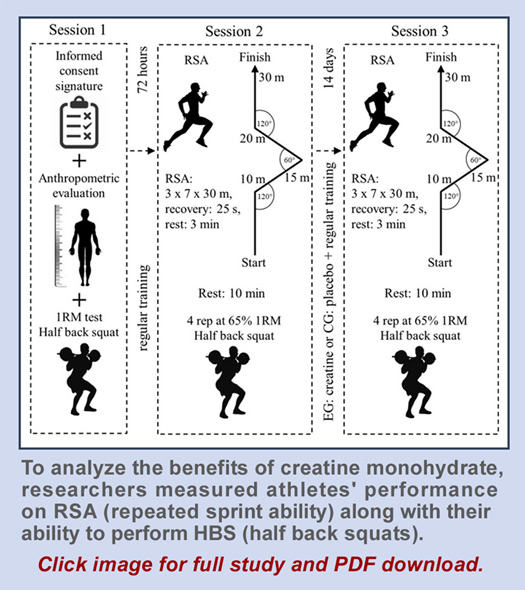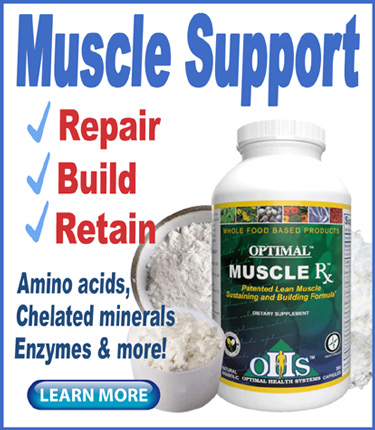Soccer is big in South American countries—it’s the equivalent of football in the U.S. And Chile is no exception. Every young soccer player esteems to go pro, and many Chileans plan their schedules around the next soccer match.
So, it’s not surprising that researchers in Chile would be interested in pinpointing any nutrient that can make players perform better. According to a collaborative study conducted by researchers from multiple universities in Chile, one such nutrient is creatine.
According to the study, published in Nutrients in April 2024, low-dose orally administered creatine monohydrate boosts post-fatigue muscle power of young athletes.
“At the end of the study, it was found that, after the induction of acute intra-session fatigue, a low dose of creatine administered orally increases muscle power in young soccer players,” the researchers wrote in the study summary.
Other benefits
While creatine benefits are widely acknowledged in the athletic world, the benefits aren’t limited to muscle support.
A 2019 study published in the Journal of Experimental Medicine found that creatine “serves as a molecular battery for immune cells by storing and distributing energy to power their fight against cancer.”
Meanwhile, a 2022 meta-analysis, published by Oxford University Press, found numerous studies proving that creatine supports memory and cognitive function.
In the current study the Chilean researchers wanted to investigate the effect of a low-dose creatine supplement on muscle power after the onset of fatigue. The fatigue was induced by repeated sprint training, followed by half back squats.
According to the researchers, squats are one of the most widely-used exercises for developing strength in professional and semi-professional soccer players.
While acknowledging that creatine monohydrate is used widely by professional soccer players, the researchers stated that “more research was needed to understand the effect of low doses on physical performance in young players.”
Study details
To conduct the study researchers recruited twenty-eight soccer players from the Everton Club of Viña del Ma in Chile. The youngest player was 17 years old, while most players were in their early twenties.
The study volunteers were divided into an experimental group and a control group.
The experimental group received 0.3 grams of creatine powder per kilogram of body mass. The control group consumed 0.3 grams of maltodextrin—as a placebo—per kilogram of body mass.
Over the 14 days of supplementation, both groups maintained regular training.
A brief history of creatine
Creatine is an organic compound found in vertebrates. It is naturally produced in the human body from the amino acids glycine and arginine.
Creatine is synthesized in the liver and kidneys and is transported through the blood and taken up by tissues with high energy demands—most notably the brain and skeletal muscle.
Creatine was first identified in 1832 when Michel Eugène Chevreul isolated it from the basified water-extract of skeletal muscle. He later named the crystallized precipitate after the Greek word for meat.
According to Wikipedia, while creatine’s influence on physical performance has been well documented since the early twentieth century, it only grew in popularity following the 1992 Olympics in Barcelona.
Before each intervention, players completed a warm-up. Then, to induce fatigue similar to that experienced during a soccer match, they were asked to perform a repeated sprint ability test followed by four half back squat repetitions with a load equivalent to 65% of 1RM (1RM refers to the most weight they could lift in one rep).
The researchers then analyzed the half back squat results to observe possible effects of Cr.
“At the end of this study, it was found that a low dose of creatine administered orally for 14 days after intra-session acute fatigue induction through 21 repetitions of repeated sprint ability generates increases in physical performance in young soccer players, showing significant increases in both execution velocity and power generated in the half back squats,” the researchers wrote in the study conclusions.
Take away
It should be noted that creatine monohydrate has emerged as one of the substances most valued by athletes of all levels. It is not uncommon to see amateurs at the local gym utilizing creatine, and it’s not uncommon to see pro athletes using it.
It should also be noted that while creatine is utilized primarily for increasing muscle strength and power, it is also used to improve performance of high-intensity activities—technically referred to as “encouraging anaerobic metabolism.”
This new study proves that both of these expected benefits are, in fact, real. The study also reinforces earlier studies that came to the same conclusion.
– – –
Creatine can be found in the following Optimal Health Systems products:
• Optimal Muscle Rx
• Optiaml B.F.F.
– – –
Source: Nutrients.


